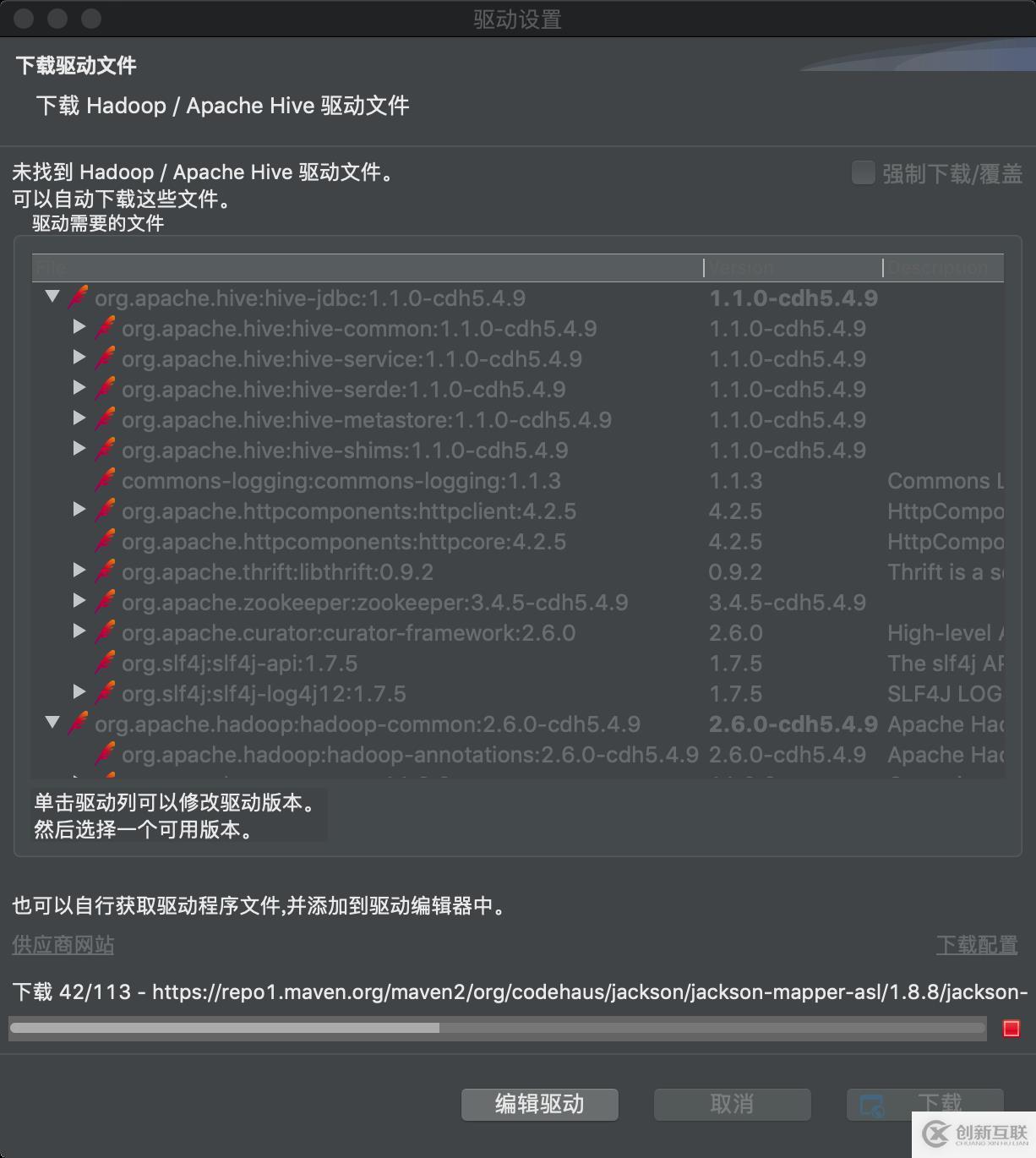TensorFlow內(nèi)存管理bfc算法的示例分析-創(chuàng)新互聯(lián)
這篇文章主要介紹TensorFlow內(nèi)存管理bfc算法的示例分析,文中介紹的非常詳細,具有一定的參考價值,感興趣的小伙伴們一定要看完!

1. 基本介紹
tensorflow設備內(nèi)存管理模塊實現(xiàn)了一個best-fit with coalescing算法(后文簡稱bfc算法)。
bfc算法是Doung Lea's malloc(dlmalloc)的一個非常簡單的版本。
它具有內(nèi)存分配、釋放、碎片管理等基本功能。
2. bfc基本算法思想
1. 數(shù)據(jù)結(jié)構(gòu)
整個內(nèi)存空間由一個按基址升序排列的Chunk雙向鏈表來表示,它們的直接前趨和后繼必須在地址連續(xù)的內(nèi)存空間。Chunk結(jié)構(gòu)體里含有實際大小、請求大小、是否被占用、基址、直接前趨、直接后繼、Bin索引等信息。

2. 申請
用戶申請一個內(nèi)存塊(malloc)。根據(jù)chunk雙鏈表找到一個合適的內(nèi)存塊,如果該內(nèi)存塊的大小是用戶申請的大小的二倍以上,那么就將該內(nèi)存塊切分成兩塊,這就是split操作。
返回其中一塊給用戶,并將該內(nèi)存塊標識為占用
Spilt操作會新增一個chunk,所以需要修改chunk雙鏈表以維持前驅(qū)和后繼關系
如果用戶申請512的空間,正好有一塊1024的chunk2是空閑的,由于1024/512 =2,所以chunk2 被split為2塊:chunk2_1和chunk2_2。返回chunk2_1給用戶并將其標志位占用狀態(tài)。
3. 釋放
用戶釋放一個內(nèi)存塊(free)。先將該塊標記為空閑。然后根據(jù)chunk數(shù)據(jù)結(jié)構(gòu)中的信息找到其前驅(qū)和后繼內(nèi)存塊。如果前驅(qū)和后繼塊中有空閑的塊,那么將剛釋放的塊和空閑的塊合并成一個更大的chunk(這就是merge操作,合并當前塊和其前后的空閑塊)。再修改雙鏈表結(jié)構(gòu)以維持前驅(qū)后繼關系。這就做到了內(nèi)存碎片的回收。
如果用戶要free chunk3,由于chunk3的前驅(qū)chunk2也是空閑的,所以將chunk2和chunk3合并得到一個新的chunk2',大小為chunk2和chunk3之和。
3. bins
1. bins數(shù)據(jù)結(jié)構(gòu)
bfc算法采取的是被動分塊的策略。最開始整個內(nèi)存是一個chunk,隨著用戶申請空間的次數(shù)增加,最開始的大chunk會被不斷的split開來,從而產(chǎn)生越來越多的小chunk。當chunk數(shù)量很大時,為了尋找一個合適的內(nèi)存塊而遍歷雙鏈表無疑是一筆巨大的開銷。為了實現(xiàn)對空閑塊的高效管理,bfc算法設計了bin這個抽象數(shù)據(jù)結(jié)構(gòu)。
每個bin都有一個size屬性,一個bin是一個擁有chunk size >= binsize的空閑chunk的集合。集合中的chunk按照chunk size的升序組織成單鏈表。bfc算法維護了一個bin的集合:bins。它由多個bin以及從屬于每個bin的chunks組成。內(nèi)存中所有的空閑chunk都由bins管理。

圖中每一列表示一個bin,列首方格中的數(shù)字表示bin的size。bin size的大小都是256的2^n的倍。每個bin下面掛載了一系列的空閑chunk,每個chunk的chunk size都大于等于所屬的bin的bin size,按照chunk size的升序掛載成單鏈表。
2. bins操作
bfc算法針對bins這個集合設計了三個操作:search、insert、delete。
search
給定一個chunk size,從bins中找到大于等于該chunksize的最小的那個空閑chunk。Search操作具體流程如下。如果bin以數(shù)組的形式組織,那么可以從index = chunk size /256 >>2的那個bin開始查找。最好的情況是開始查找的那個bin的chunk鏈表非空,那么直接返回鏈表頭即可。這種情況時間復雜度是常數(shù)級的。最壞的情況是遍歷bins數(shù)組中所有的bin。對于一般大小的內(nèi)存來說,bins數(shù)組元素非常少,比如4G空間只需要23個bin就足夠了(256 * 2 ^ 23 > 4G),因此也很快能返回結(jié)果。總體來說search操作是非常高效的。對于固定大小內(nèi)存來說,查找時間是常數(shù)量級的。
insert
將一個空閑的chunk插入到一個bin所掛載的chunk鏈表中,同時需要維持chunk鏈表的升序關系。具體流程是直接將chunk插入到index = chunk size /256 >>2的那個bin中即可。
delete
將一個空閑的chunk從bins中移除。
4. 總結(jié)
將內(nèi)存分塊管理,按塊進行空間分配和釋放。
通過split操作將大內(nèi)存塊分解成用戶需要的小內(nèi)存塊。
通過merge操作合并小的內(nèi)存塊,做到內(nèi)存碎片回收
通過bin這個抽象數(shù)據(jù)結(jié)構(gòu)實現(xiàn)對空閑塊高效管理。
5. 代碼分析
1. 代碼地址
https://github.com/tensorflow/tensorflow/tree/master/tensorflow/core/common_runtime
2. 數(shù)據(jù)結(jié)構(gòu)
Chunk
static const int kInvalidChunkHandle = -1;
...
struct Chunk {
size_t size = 0; // Full size of buffer.
// We sometimes give chunks that are larger than needed to reduce
// fragmentation. requested_size keeps track of what the client
// actually wanted so we can understand whether our splitting
// strategy is efficient.
size_t requested_size = 0;
// allocation_id is set to -1 when the chunk is not in use. It is assigned a
// value greater than zero before the chunk is returned from
// AllocateRaw, and this value is unique among values assigned by
// the parent allocator.
int64 allocation_id = -1;
void* ptr = nullptr; // pointer to granted subbuffer.
// If not kInvalidChunkHandle, the memory referred to by 'prev' is directly
// preceding the memory used by this chunk. E.g., It should start
// at 'ptr - prev->size'
ChunkHandle prev = kInvalidChunkHandle;
// If not kInvalidChunkHandle, the memory referred to by 'next' is directly
// following the memory used by this chunk. E.g., It should be at
// 'ptr + size'
ChunkHandle next = kInvalidChunkHandle;
// What bin are we in?
BinNum bin_num = kInvalidBinNum;
bool in_use() const { return allocation_id != -1; }
};Bin
// A Bin is a collection of similar-sized free chunks.
struct Bin {
// All chunks in this bin have >= bin_size memory.
size_t bin_size = 0;
struct ChunkComparator {
explicit ChunkComparator(BFCAllocator* allocator)
: allocator_(allocator) {}
// Sort first by size and then use pointer address as a tie breaker.
bool operator()(const ChunkHandle ha,
const ChunkHandle hb) const NO_THREAD_SAFETY_ANALYSIS {
const Chunk* a = allocator_->ChunkFromHandle(ha);
const Chunk* b = allocator_->ChunkFromHandle(hb);
if (a->size != b->size) {
return a->size < b->size;
}
return a->ptr < b->ptr;
}
private:
BFCAllocator* allocator_; // The parent allocator
};
typedef std::set<ChunkHandle, ChunkComparator> FreeChunkSet;
// List of free chunks within the bin, sorted by chunk size.
// Chunk * not owned.
FreeChunkSet free_chunks;
Bin(BFCAllocator* allocator, size_t bs)
: bin_size(bs), free_chunks(ChunkComparator(allocator)) {}
};AllocationRegion
AllocationRegion給一個連續(xù)的內(nèi)存區(qū)域做指針到ChunkHandle的映射。
RegionManager
RegionManager聚集了一個或多個AllocationRegion,并提供一個從指針到基礎ChunkHandle的間接層,這個間接層可在多個不連續(xù)的內(nèi)存區(qū)域進行分配。
3. 分配大小
將每次分配的內(nèi)存大小調(diào)整為kMinAllocationSize的N倍,這樣所有內(nèi)存地址都是很好地按字節(jié)對齊了。
// kMinAllocationSize = 256
static const size_t kMinAllocationBits = 8;
static const size_t kMinAllocationSize = 1 << kMinAllocationBits;
...
size_t BFCAllocator::RoundedBytes(size_t bytes) {
size_t rounded_bytes =
(kMinAllocationSize *
((bytes + kMinAllocationSize - 1) / kMinAllocationSize));
DCHECK_EQ(size_t{0}, rounded_bytes % kMinAllocationSize);
return rounded_bytes;
}4. 初始化bin
typedef int BinNum;
static const int kInvalidBinNum = -1;
static const int kNumBins = 21;
...
// 二進制2^8往左移0,1,2位
// (static_cast<size_t>(256) << 0) = 256
// (static_cast<size_t>(256) << 1) = 512
// (static_cast<size_t>(256) << 2) = 1024
size_t BinNumToSize(BinNum index) {
return static_cast<size_t>(256) << index;
}
...
char bins_space_[sizeof(Bin) * kNumBins];
// Map from bin size to Bin
Bin* BinFromIndex(BinNum index) {
return reinterpret_cast<Bin*>(&(bins_space_[index * sizeof(Bin)]));
}
...
// We create bins to fit all possible ranges that cover the
// memory_limit_ starting from allocations up to 256 bytes to
// allocations up to (and including) the memory limit.
for (BinNum b = 0; b < kNumBins; b++) {
size_t bin_size = BinNumToSize(b);
VLOG(1) << "Creating bin of max chunk size "
<< strings::HumanReadableNumBytes(bin_size);
new (BinFromIndex(b)) Bin(this, bin_size);
CHECK_EQ(BinForSize(bin_size), BinFromIndex(b));
CHECK_EQ(BinForSize(bin_size + 255), BinFromIndex(b));
CHECK_EQ(BinForSize(bin_size * 2 - 1), BinFromIndex(b));
if (b + 1 < kNumBins) {
CHECK_NE(BinForSize(bin_size * 2), BinFromIndex(b));
}
}5. 查找bin
// 求屬于第幾個bin
BinNum BinNumForSize(size_t bytes) {
uint64 v = std::max<size_t>(bytes, 256) >> kMinAllocationBits;
int b = std::min(kNumBins - 1, Log2FloorNonZero(v));
return b;
}
// 最高位非零的二進制位數(shù),eg: 0001 0101B 為5
inline int Log2FloorNonZero(uint64 n) {
#if defined(__GNUC__)
return 63 ^ __builtin_clzll(n);
#elif defined(PLATFORM_WINDOWS)
unsigned long index;
_BitScanReverse64(&index, n);
return index;
#else
int r = 0;
while (n > 0) {
r++;
n >>= 1;
}
return r;
#endif
}6. 查找Chunk
// 先加鎖
mutex_lock l(lock_);
void* ptr = FindChunkPtr(bin_num, rounded_bytes, num_bytes);
if (ptr != nullptr) {
return ptr;
}
// FindChunkPtr函數(shù)內(nèi)部
void* BFCAllocator::FindChunkPtr(BinNum bin_num, size_t rounded_bytes,
size_t num_bytes) {
// First identify the first bin that could satisfy rounded_bytes.
for (; bin_num < kNumBins; bin_num++) {
// Start searching from the first bin for the smallest chunk that fits
// rounded_bytes.
Bin* b = BinFromIndex(bin_num);
for (auto citer = b->free_chunks.begin(); citer != b->free_chunks.end();
++citer) {
// 從之前得到的Bin索引開始,查找合適的空閑Chunk:
const BFCAllocator::ChunkHandle h = (*citer);
BFCAllocator::Chunk* chunk = ChunkFromHandle(h);
DCHECK(!chunk->in_use());
if (chunk->size >= rounded_bytes) {
// We found an existing chunk that fits us that wasn't in use, so remove
// it from the free bin structure prior to using.
RemoveFreeChunkIterFromBin(&b->free_chunks, citer);
// If we can break the size of the chunk into two reasonably
// large pieces, do so.
//
// TODO(vrv): What should be the criteria when deciding when
// to split?
// 具體實現(xiàn)后面會分析
if (chunk->size >= rounded_bytes * 2) {
SplitChunk(h, rounded_bytes);
chunk = ChunkFromHandle(h); // Update chunk pointer in case it moved
}
// The requested size of the returned chunk is what the user
// has allocated.
chunk->requested_size = num_bytes;
// Assign a unique id and increment the id counter, marking the
// chunk as being in use.
chunk->allocation_id = next_allocation_id_++;
// Update stats.
++stats_.num_allocs;
stats_.bytes_in_use += chunk->size;
stats_.max_bytes_in_use =
std::max(stats_.max_bytes_in_use, stats_.bytes_in_use);
stats_.max_alloc_size =
std::max<std::size_t>(stats_.max_alloc_size, chunk->size);
VLOG(4) << "Returning: " << chunk->ptr;
if (VLOG_IS_ON(4)) {
LOG(INFO) << "A: " << RenderOccupancy();
}
return chunk->ptr;
}
}
}
return nullptr;
}7. 拆分Chunk
如果Chunk的大小大于等于申請內(nèi)存大小的2倍,那么將該Chunk拆分成2個:第一個Chunk的大小等于申請內(nèi)存大小,第二個Chunk作為它的直接后繼。
if (chunk->size >= rounded_bytes * 2) {
SplitChunk(h, rounded_bytes);
chunk = ChunkFromHandle(h); // Update chunk pointer in case it moved
}
void BFCAllocator::SplitChunk(BFCAllocator::ChunkHandle h, size_t num_bytes) {
// Allocate the new chunk before we do any ChunkFromHandle
ChunkHandle h_new_chunk = AllocateChunk();
Chunk* c = ChunkFromHandle(h);
CHECK(!c->in_use() && (c->bin_num == kInvalidBinNum));
// Create a new chunk starting num_bytes after c
BFCAllocator::Chunk* new_chunk = ChunkFromHandle(h_new_chunk);
new_chunk->ptr = static_cast<void*>(static_cast<char*>(c->ptr) + num_bytes);
region_manager_.set_handle(new_chunk->ptr, h_new_chunk);
// Set the new sizes of the chunks.
new_chunk->size = c->size - num_bytes;
c->size = num_bytes;
// The new chunk is not in use.
new_chunk->allocation_id = -1;
// Maintain the pointers.
// c <-> c_neighbor becomes
// c <-> new_chunk <-> c_neighbor
BFCAllocator::ChunkHandle h_neighbor = c->next;
new_chunk->prev = h;
new_chunk->next = h_neighbor;
c->next = h_new_chunk;
if (h_neighbor != kInvalidChunkHandle) {
Chunk* c_neighbor = ChunkFromHandle(h_neighbor);
c_neighbor->prev = h_new_chunk;
}
// Add the newly free chunk to the free bin.
InsertFreeChunkIntoBin(h_new_chunk);
}8. 回收chunk
加鎖,獲得ChunkHandle
mutex_lock l(lock_); BFCAllocator::ChunkHandle h = region_manager_.get_handle(ptr); FreeAndMaybeCoalesce(h);
FreeAndMaybeCoalesce
void BFCAllocator::FreeAndMaybeCoalesce(BFCAllocator::ChunkHandle h) {
Chunk* c = ChunkFromHandle(h);
CHECK(c->in_use() && (c->bin_num == kInvalidBinNum));
// Mark the chunk as no longer in use
c->allocation_id = -1;
// Updates the stats.
stats_.bytes_in_use -= c->size;
// This chunk is no longer in-use, consider coalescing the chunk
// with adjacent chunks.
ChunkHandle chunk_to_reassign = h;
// If the next chunk is free, coalesce the two
if (c->next != kInvalidChunkHandle) {
Chunk* cnext = ChunkFromHandle(c->next);
if (!cnext->in_use()) {
// VLOG(8) << "Chunk at " << cnext->ptr << " merging with c " <<
// c->ptr;
chunk_to_reassign = h;
// Deletes c->next
RemoveFreeChunkFromBin(c->next);
Merge(h, ChunkFromHandle(h)->next);
}
}
// If the previous chunk is free, coalesce the two
c = ChunkFromHandle(h);
if (c->prev != kInvalidChunkHandle) {
Chunk* cprev = ChunkFromHandle(c->prev);
if (!cprev->in_use()) {
// VLOG(8) << "Chunk at " << c->ptr << " merging into c->prev "
// << cprev->ptr;
chunk_to_reassign = c->prev;
// Deletes c
RemoveFreeChunkFromBin(c->prev);
Merge(ChunkFromHandle(h)->prev, h);
c = ChunkFromHandle(h);
}
}
InsertFreeChunkIntoBin(chunk_to_reassign);
}Merge
// Merges h2 and h3 when Chunk(h2)->next is h3 and Chunk(h3)->prev is c1.
// We merge Chunk(h3) into Chunk(h2).
void BFCAllocator::Merge(BFCAllocator::ChunkHandle h2,
BFCAllocator::ChunkHandle h3) {
Chunk* c1 = ChunkFromHandle(h2);
Chunk* c2 = ChunkFromHandle(h3);
// We can only merge chunks that are not in use.
CHECK(!c1->in_use() && !c2->in_use());
// c1's prev doesn't change, still points to the same ptr, and is
// still not in use.
// Fix up neighbor pointers
//
// c1 <-> c2 <-> c3 should become
// c1 <-> c3
BFCAllocator::ChunkHandle h4 = c2->next;
c1->next = h4;
CHECK(c2->prev == h2);
if (h4 != kInvalidChunkHandle) {
BFCAllocator::Chunk* c3 = ChunkFromHandle(h4);
c3->prev = h2;
}
// Set the new size
c1->size += c2->size;
DeleteChunk(h3);
}以上是“TensorFlow內(nèi)存管理bfc算法的示例分析”這篇文章的所有內(nèi)容,感謝各位的閱讀!希望分享的內(nèi)容對大家有幫助,更多相關知識,歡迎關注創(chuàng)新互聯(lián)行業(yè)資訊頻道!
網(wǎng)站標題:TensorFlow內(nèi)存管理bfc算法的示例分析-創(chuàng)新互聯(lián)
網(wǎng)站路徑:http://chinadenli.net/article0/pepio.html
成都網(wǎng)站建設公司_創(chuàng)新互聯(lián),為您提供外貿(mào)建站、網(wǎng)站設計公司、微信公眾號、做網(wǎng)站、營銷型網(wǎng)站建設、網(wǎng)頁設計公司
聲明:本網(wǎng)站發(fā)布的內(nèi)容(圖片、視頻和文字)以用戶投稿、用戶轉(zhuǎn)載內(nèi)容為主,如果涉及侵權(quán)請盡快告知,我們將會在第一時間刪除。文章觀點不代表本網(wǎng)站立場,如需處理請聯(lián)系客服。電話:028-86922220;郵箱:631063699@qq.com。內(nèi)容未經(jīng)允許不得轉(zhuǎn)載,或轉(zhuǎn)載時需注明來源: 創(chuàng)新互聯(lián)

- 網(wǎng)站設計接我一標開啟圖標新的可能 2021-05-07
- 網(wǎng)站設計制作注意好這幾個問題,不愁網(wǎng)站建設沒有效果 2022-08-14
- 網(wǎng)站建設:網(wǎng)站設計建設的方法 2014-03-23
- 所有網(wǎng)站設計內(nèi)容要以用戶為核心出發(fā) 2021-04-11
- 網(wǎng)站設計之設計價值觀 2022-09-15
- 好的成都網(wǎng)站設計需要注意的三點 2016-10-28
- 深圳網(wǎng)站制作-深圳網(wǎng)站設計之醫(yī)院網(wǎng)站優(yōu)化注意事項 2022-06-26
- 網(wǎng)站制作的前期應該如何做好策劃工作? 2016-08-22
- 上海網(wǎng)站設計公司、上海網(wǎng)站建設公司在我們大學的專業(yè)學習中對我們的專業(yè)知識有多高 2020-11-06
- 小譚營銷網(wǎng)站設計:自適應網(wǎng)站設計的優(yōu)缺點? 2023-02-21
- 單頁網(wǎng)站設計有哪些優(yōu)點? 2016-08-14
- 響應式網(wǎng)站設計是要「響應」什么呢 2019-10-03